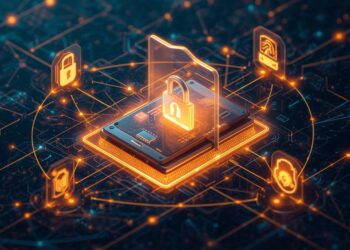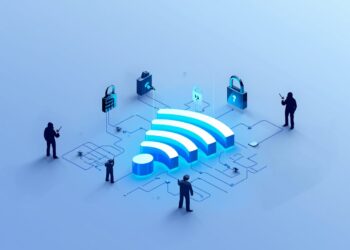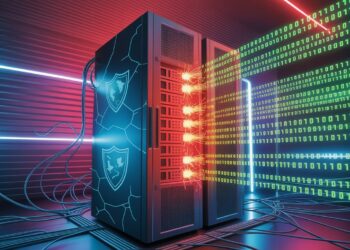Introduction
Technology keeps changing fast. New ideas like blockchain and artificial intelligence (AI) are shaping the way we live and work. Both are transforming many industries, from banking to healthcare to supply chains. But what happens when these two innovations come together? Understanding how blockchain and AI work together is key to staying ahead today and in the future.
This article dives into how these tools support each other, the problems they face, and the chances they bring for growth. Combining blockchain and AI isn’t just about cool tech – it can make systems smarter, safer, and more trustworthy.
The Fundamentals of Blockchain and AI
What is Blockchain Technology?
Blockchain is like a digital ledger that records transactions publicly. It works without a central boss, making data more secure. Every record, or block, is linked to the one before it, forming a chain. This makes hacking or changing data really hard.
Some top benefits are security, transparency, and data permanence. Popular platforms include Bitcoin and Ethereum, which run on blockchains. These create trust because everyone can see the same records, and no one can cheat the system.
What is Artificial Intelligence?
AI aims to make computers think and learn like humans. It covers areas like machine learning, which teaches machines to find patterns; natural language processing (NLP), which helps computers understand language; and computer vision, which allows machines to see and interpret images.
AI acts like a digital brain that can make decisions, solve problems, and even learn from new data. We see AI in daily life through voice assistants like Siri, movie recommendations, and online shopping suggestions.
Their Individual Impact on Society
AI is growing fast. Around 80% of businesses plan to adopt AI within the next five years. It boosts efficiency and helps companies make better decisions. Meanwhile, blockchain secures digital payments and reduces fraud. Both are changing industries by increasing trust, speeding up processes, and automating tasks.
For example, AI cuts costs in healthcare by helping with diagnosis, while blockchain makes supply chains more transparent. They are reshaping how we handle data, money, and trust.
How Blockchain Enhances AI Applications
Data Security and Privacy Improvements
Blockchain acts as a safe space for sharing data. Hospitals can store patient info on a blockchain, protecting privacy while allowing authorized access. This helps AI systems learn from data without risking leaks.
A real example is using blockchain to manage healthcare info securely. It ensures only approved people see sensitive data. You should consider blockchain-based controls when working with private or sensitive AI data.
Data Integrity and Provenance
AI relies on trustworthy data. Blockchain guarantees data is real and unaltered. In supply chains, blockchain tracks each product’s journey, ensuring transparency. This means AI models use accurate info, making results more reliable.
Industry leaders emphasize that data traceability grows trust. That’s why blockchain is key when AI needs factual, unchangeable inputs.
Decentralized AI Marketplaces
Blockchain opens doors for people to share AI models directly with others. No single company controls everything. This gives more people access to AI tools and reduces reliance on big tech firms.
One example is Ocean Protocol, a platform where users buy and sell data and AI models securely. Decentralized markets build a more open AI community, encouraging innovation worldwide.
How AI Advances Blockchain Technology
Enhanced Security Protocols
AI tools can spot suspicious activity on blockchain networks quickly. They catch fraud faster than traditional methods. For instance, AI algorithms analyze transactions in real time to identify unusual patterns.
Experts recommend using AI-powered security solutions to keep blockchain systems safe from hackers and scams.
Smart Contracts and Automation
Smart contracts are codes that automatically execute when conditions are met. AI enhances these by making contracts smarter and more adaptable. For example, insurance claims can be processed automatically with AI understanding the situation and making decisions faster.
Imagine contracts that learn from their use, becoming more accurate and efficient over time. This opens up new ways to automate tasks and reduce errors.
Scalability and Performance Optimization
AI helps blockchain process more transactions faster. It can optimize how data moves through networks. For example, Layer 2 solutions, which speed up transactions, benefit when paired with AI tools that manage traffic.
Research shows that combining AI with blockchain can improve overall performance and scalability, making these systems ready for mass use.
Challenges and Risks at the Intersection of Blockchain and AI
Technical and Implementation Barriers
Integrating these two technologies isn’t easy. Compatibility issues, lack of standards, and unclear rules slow progress. Developers need experience in both fields to create smooth systems.
Investing in teams with cross-disciplinary skills is a good step toward overcoming these hurdles.
Ethical and Privacy Concerns
AI can sometimes hide biases, leading to unfair decisions. Transparency is hard because blockchain records are unchangeable. When a mistake happens, fixing it is not simple.
Industry leaders warn about ethical issues, reminding us we must build these tools responsibly and transparently.
Market and Adoption Challenges
Many firms resist moving to new tech due to costs and complexity. Small companies might find it too expensive to develop blockchain-AI projects.
To speed adoption, stakeholders need to find affordable solutions and show clear benefits. Building trust is essential for expanding these systems.
Future Trends and Opportunities
Emerging Innovations
AI-powered blockchain analytics can spot fraud and improve compliance. New models for decentralized AI governance are being tested. The goal? Trustworthy, transparent systems that everyone controls.
In the future, security for the Internet of Things could rely heavily on both blockchain and AI working hand-in-hand to protect devices and data.
Industry-Specific Use Cases
- Finance: Real-time fraud detection and transparent audits.
- Healthcare: Safe data sharing and personalized treatments.
- Supply Chain: Confirm product origins and track shipments instantly.
These use cases show the real power of combining blockchain and AI to improve safety and efficiency.
Actionable Tips for Stakeholders
- Connect blockchain developers with AI experts.
- Make transparency and ethics a priority when designing systems.
- Keep up with new laws and standards for both technologies.
Collaboration and responsible innovation will lead the way forward.
Conclusion
Blockchain and AI don’t just operate separately—they strengthen each other, creating smarter, safer systems. Together, they can revolutionize industries and solve problems that used to seem impossible. But, to get the most benefits, we need to face the hurdles head-on—technical, ethical, and market challenges.
The future is bright for the blend of these technologies. Everyone involved should explore these opportunities, invest in research, and help shape fairer, more trustworthy systems. This partnership holds tremendous potential to change the way we live, work, and trust in the digital world.
Key Takeaways
- Knowing how blockchain and AI work makes it easier to use their combined power effectively.
- Blockchain improves AI’s trustworthiness by safeguarding data.
- AI enhances blockchain’s speed, security, and automation.
- Overcoming challenges is crucial to building sustainable, smart solutions.
- The merger of blockchain and AI could reshape many sectors, making systems smarter, safer, and more transparent.

























